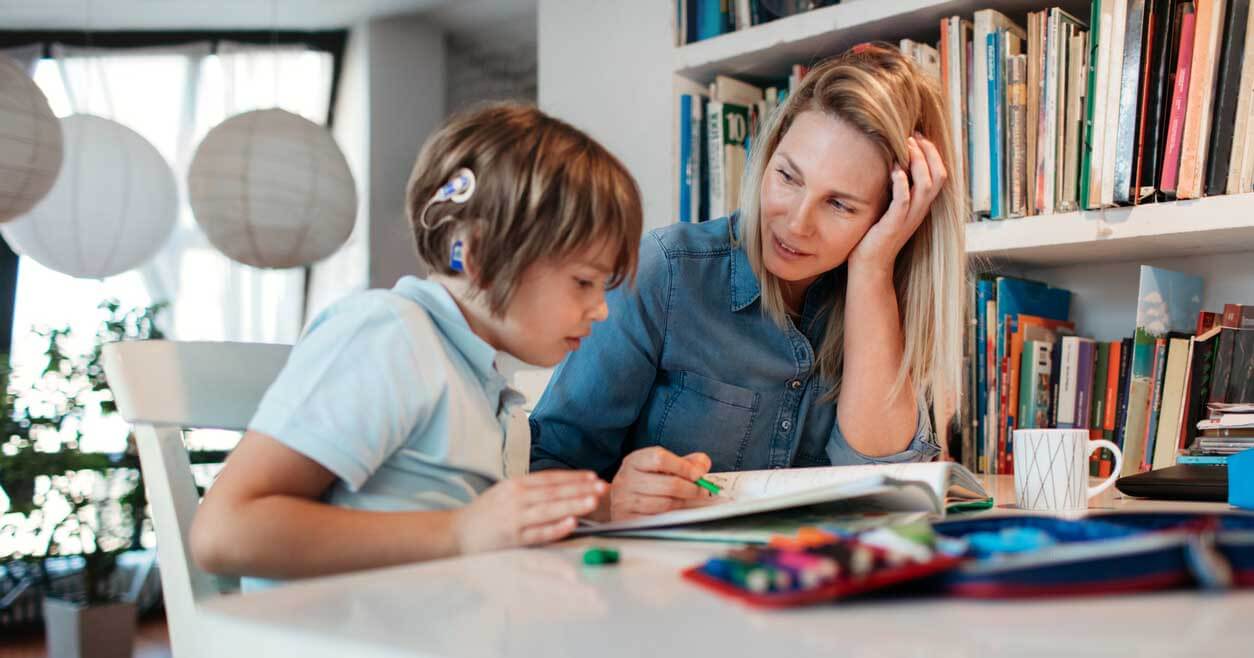All newborn babies in England are offered screening for hearing assessments under the Newborn Hearing Screening Programme (NHSP; Public Health England, 2020). Following screening, patient EP was referred to her local hearing and balance centre for further investigations, which identified a moderate sensory neural hearing loss. At 2 years, EP was found to be homozygous for the connexin 26 mutation c35delG. This gene mutation explains her hearing loss (Zelante et al, 1997; Lucotte, 2007). EP’s bilateral hearing loss was initially managed with grommets and hearing aids but, at age 5 years, she underwent surgery for cochlear implants, as guided by NICE (2019).
Case presentation
At age 9 years, EP presented to her local hospital with polyuria, polydipsia and weight loss, and was subsequently diagnosed with type 1 diabetes.
Although she has a gene mutation resulting in deafness, c35delG is not associated with syndromic or monogenic diabetes and is not the cause of her diabetes. Monogenic diabetes, of which maturity-onset diabetes of the young (MODY) is an example, is a result of a single gene mutation. Maternally inherited diabetes and deafness (MIDD) arises from a mutation in mitochondrial DNA (Hattersley et al, 2018; Diabetes Genes, 2022), but EP’s diabetes and deafness are not thought to be related.
EP commenced an insulin therapy regimen of multi-daily injections and self-monitoring of blood glucose. On discharge from hospital, she was on a regimen of long-acting insulin glargine (Lantus) once daily and rapid-acting insulin aspart (NovoRapid) with carbohydrate counting for meals and snacks.
A referral was received by the Children and Young Adults Diabetes team in her area. She attended her first clinic appointment shortly after, where she was introduced to the team who would support her care. It was agreed that she the met criteria for real-time continuous glucose monitoring (rtCGM) based on her communication challenges (NICE, 2022a), and was commenced on the Dexcom G6 CGM system. At 3 months post-diagnosis, her estimated HbA1c was 44 mmol/mol, according to glucose sensor data. It was not possible collect a blood sample for an accurate HbA1c measurement because of COVID-19 restrictions and the government guidance at the time to remain at home. To reduce the risk of long-term complications, the recommended target HbA1c in children and young people is ≤48 mmol/mol (NICE, 2022a).
Lack of current evidence
Under the Equality Act 2010 (or Disability Discrimination Act 1995 in Northern Ireland), taking insulin or other medications for diabetes is seen as a disability (Diabetes UK, 2023). Thirty per cent of children with hearing loss and a cochlear implant have additional disabilities. A systematic review of 24 studies looking at the outcomes of children with additional disabilities following cochlear implantation found that none mentioned diabetes as an additional challenge (Tuchman, 2019).
There is very limited evidence about children with type 1 diabetes who are deaf from non-syndromic causes. Much of what has been written relates to monogenic and syndromic forms of diabetes, including Wolfram syndrome (a rare genetic disorder also known as DIDMOAD) and MIDD (Costi et al, 2001; Cano et al, 2007). Considerations for the care of children with diabetes who are deaf can be similar, whatever the cause of the hearing loss. With Wolfram syndrome, however, management includes the use of audiometry and cochlear implants (Urano, 2016). This is not the same for someone with pre-existing deafness who is currently using cochlear implants.
In their systematic review and meta-analysis, Teng et al (2017) showed that there is a relationship between type 1 diabetes and auditory dysfunction, and that the odds of hearing loss is higher for people with type 1 diabetes compared to those without. Despite the review incorporating studies that included children and young people, all focused on a combination of the effects of age, disease duration and metabolic control and their influence on auditory function in those with type 1 diabetes (Ferrer et al, 1991; Okhovat et al, 2011; Hou et al, 2015). While this research and evidence is important, it does highlight that limited evidence exists in relation to pre-existing deafness in people diagnosed with type 1 diabetes from non-syndromic causes.
Technology for diabetes management
The current recommendation from NICE is that all children and young people with type 1 diabetes should be offered rtCGM, alongside education to support their use of it (NICE, 2022a). Its use has been shown to decrease HbA1c and improve time in range, an important measure when considering clinical outcomes (NICE, 2022b). EP was diagnosed with type 1 diabetes in February 2020, before the current guidance was published and when evidence did not show an overall benefit of rtCGM use in young people (Tamborlane et al, 2008; Laffel et al, 2020). While rtCGM was not considered for routine use, it could be recommended for certain individuals. Considerations would include the ability to recognise hypoglycaemia, communication abilities and quality of life in relation to the psychosocial management of diabetes. Often this would lead to discussions within diabetes teams about the suitability of and requirement for rtCGM in individuals.
During her first clinic appointment with the multi-disciplinary team, EP’s parents shared specific challenges they had experienced in relation to her diabetes and deafness. During the day, EP communicated well with her parents using a combination of speech, British Sign Language (BSL), lip-reading and listening when she was using her cochlear implants. She is guided to remove the external parts of her cochlear implant device overnight and, accordingly, is difficult to wake when required. EP and her family are competent with BSL, but they expressed the challenges of using it during the night when it is dark and when EP is not completely awake and coherent. Diabetes management overnight is known to be challenging, with mild night-time hypoglycaemia not often being recognised by a child or young person, and sometimes resulting in further lowering of their glucose levels (Hanas, 2015). It is recommended, therefore, that parents wake during the night to check their child’s glucose levels following a recent diabetes diagnosis. Waking EP during the night and communicating with her to manage her diabetes was challenging. The team agreed that the use of rtCGM, with a follow-on feature to enable her parents to view her glucose data and alerts remotely on their mobile phones, would benefit EP’s diabetes management and be more practical for her parents overnight.
Previously, for example, when checking glucose overnight, EP’s parents would try to communicate with her if she woke, explaining what they were doing. With rtCGM, they were able to monitor glucose levels without waking her. Only when she required treatment for hypoglycaemia or hyperglycaemia was she disturbed and they would attempt to communicate with her. Re-checking of glucose levels following treatment can also be undertaken using rtCGM.
Alarm-based technology is used widely in diabetes through rtCGM, insulin pumps and closed-loop pump therapy. rtCGM relies on vibrations and noise alerts to inform the user when their glucose is above or below a target range. Insulin pump technologies rely on alarms to alert a user of an inability to supply insulin due to a cannula blockage or suspended pump. The majority of these technologies have the capacity to vibrate whilst in a silent mode, but lack the functionality to vibrate and create a noise alert simultaneously. If insulin pumps and rtCGM devices could provide these alerts simultaneously, it would benefit parents (who could be alerted by sound) and a child or young person who is living with auditory difficulties and becoming more independent (who can be alerted by vibration).
For devices that default to vibrate, there is variability in the intensity of the alarm across devices, which changes the likelihood of someone recognising it. It is also influenced by clothing and where the device is placed. Devices that have a default vibrate signal are limited by the inability to change the vibration intensity, pattern or length, which makes distinguishing between alarms and their severity challenging (Harkins et al, 2010). The current vibration functionality of devices to aid diabetes management may not, therefore, be sufficient to prompt a reaction in someone who is deaf.
Technology for deaf people
Technology to support people who are deaf continues to advance, with the use of lighting to alert of dangers, such as smoke or intrusion, and devices that vibrate to signal the use of a doorbell or a ringing phone. Many of these devices are not new, but have been developed over many years to improve quality of daily living and promote independence.
Consideration should be given into what technology exists and how it can be used to promote the good management of diabetes in people who are deaf. Plug-in devices can be used to alert someone visually through bright lights when there is noise coming from the connecting device. These devices would be limited to use within the home, however, and would not provide support in an outside environment or a public setting. Watch technologies may be required for use outside the home, provided they can be connected to diabetes devices.
Education
EP attends a mainstream school and has an education, health and care plan (EHCP) in place that describes the “additional education needs of the child or young person, to secure the best possible outcome for them across education, health and social care” (Department for Education and Department of Health, 2015). A child or young person who is deaf and attends a mainstream school must have an EHCP, as stated by law in The Special Educational Needs and Disability (SEND) Regulations (Department for Education, 2014a). Schools, local authorities and health professionals have responsibilities to children and young people with disabilities and special educational needs, as outlined by part 3 of the Children and Families Act (2014).
To facilitate equality of learning for EP whilst using cochlear implants within mainstream school, she is supported by a teaching assistant. They were provided with additional training by a diabetes nurse to support diabetes management within school and on school residential trips. Whilst EP is in their care, they are to recognise noise alerts from the rtCGM and insulin pump, and respond accordingly. Considering EP is in her penultimate year of primary school education and will progress to secondary school, her clinical team will be working with her to promote gradual independence with the management of her diabetes in accordance with the Goals of Diabetes Education (Children and Young People’s Diabetes National Diabetes Network, 2016). There is also a requirement to consider how, as an individual, her needs will change, and how to maintain the quality of her education and ensure there is no inequity compared with her peers.
Although she is likely to use cochlear implants within school, she may find hearing the alarms challenging. For a cochlear implant user, speech and noise recognition can be difficult against the often loud background noise of a school environment (Fu and Nogaki, 2005). Planning and preparing for transition to secondary school is a requirement for a child with SEND (Department for Education and Department of Health, 2015). This may include reviewing their SEND or the EHCP. Assessments in relation to the EHCP should involve the child and parent or carer, to ensure their views are recorded.
Conclusion
Clinic experience of children with congenital hearing loss and type 1 diabetes from unrelated causes is limited. People living with both conditions require additional support from their clinical teams to manage them simultaneously. There is a need for more evidence to direct and advise clinical teams to ensure equality and equity in the care and support that can be provided for people living with type 1 diabetes who are deaf.
Companies who develop technology for people living with diabetes should consider how they can adapt and improve their devices to support people also living with auditory dysfunction for people of all ages. Given the current limitations of diabetes technology to offer sufficient custom vibration signals, it will be important to consider future advances in technology and if the current technology used by EP is optimal.
Acknowledgements
The author would like to thank the Leeds Children and Young People’s Diabetes team and the Birmingham City University for their support in writing this article.





Developments that will impact your practice.
23 Oct 2025